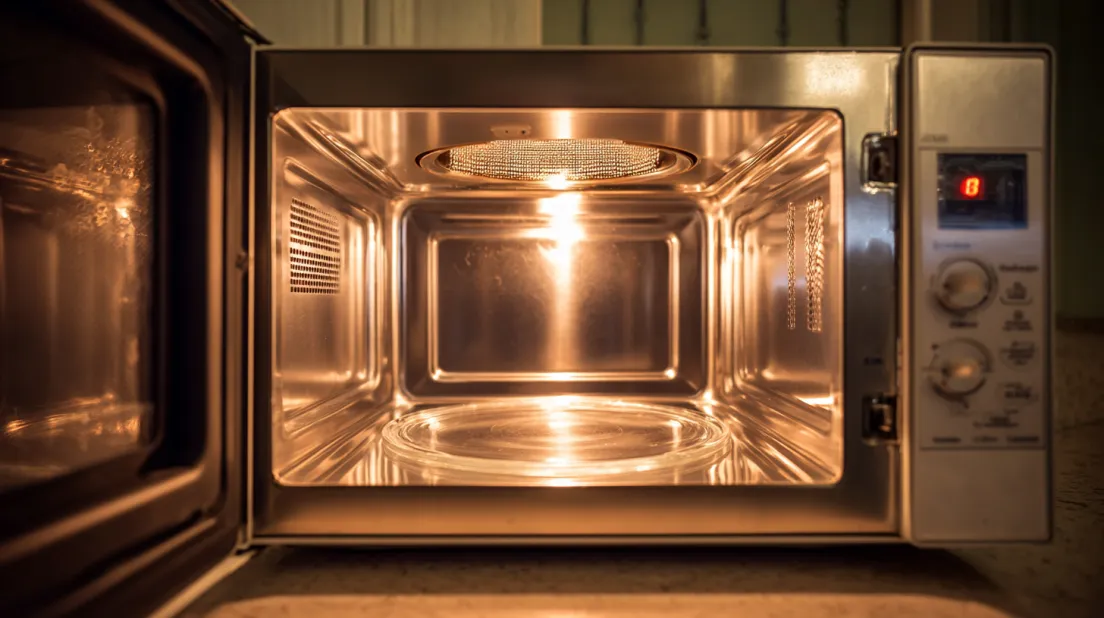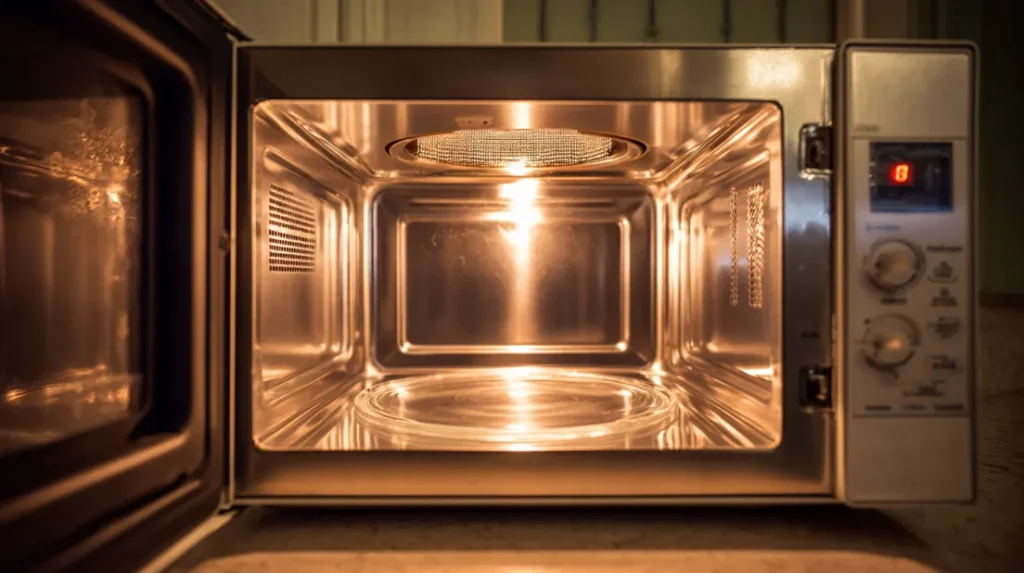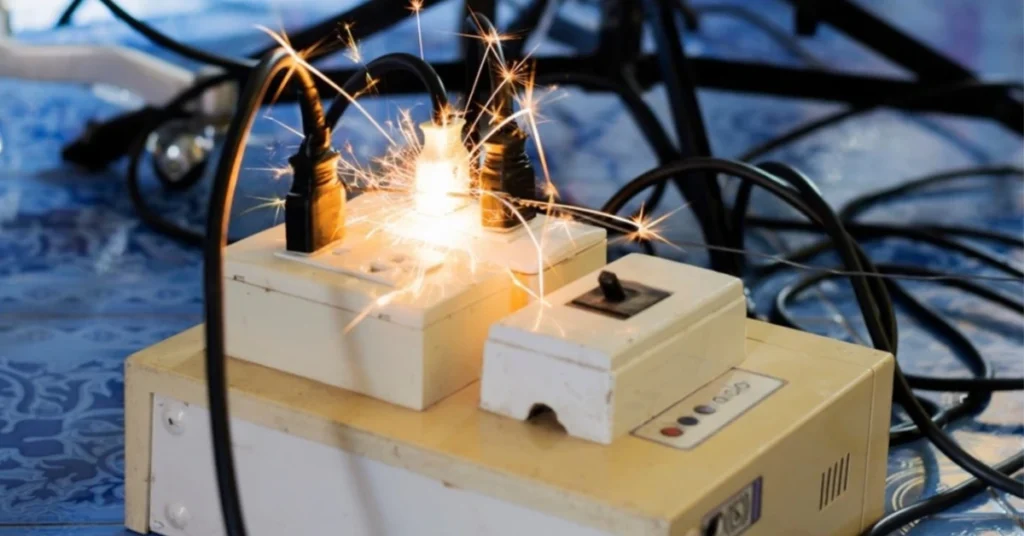A microwave oven is a staple in modern kitchens, valued for its speed and convenience. It works by using a component called a magnetron to generate microwave energy that heats your food. So, when you find your microwave not heating, it can disrupt your daily routine. This is a common issue, and understanding the potential causes is the first step toward a solution. Early diagnosis is important not just for getting your appliance working again, but also for preventing further damage to its internal components.
Microwave Repair Cost in India – A Quick Information
Before diving into repairs, it is helpful to understand the potential costs. The price for fixing a microwave not heating up depends heavily on which internal part has failed, as component costs vary significantly.
| Component | Estimated Repair/Replacement Cost (₹) |
|---|---|
| Magnetron | ₹1,950 – ₹2,800 |
| High-voltage Diode | ₹850 – ₹1,200 |
| Door Switch | ₹820 – ₹1,200 |
| Thermal Fuse | ₹850 – ₹1,200 |
| Full Repair Service (Inspection + Minor Fixes) | ₹500 – ₹1,500 |
Common Reasons Why a Microwave Is Not Heating

If your microwave runs but won’t heat, the problem often lies with specific internal parts. Here are the most common culprits behind a microwave not heating up.
Unbeatable Price 5-Star Rated Partner! 2200+ Shades! Top Quality Paint Free Cancellation!

Get a rental agreement with doorstep delivery

Find the BEST deals and get unbelievable DISCOUNTS directly from builders!

5-Star rated painters, premium paints and services at the BEST PRICES!
1. Faulty Magnetron
- Function: The main heating element that generates the microwaves to cook food.
- Symptoms: A loud, unusual humming or buzzing noise with no resulting heat.
- Cause: This part wears out over time due to intense operating conditions.
- Key Info: It is the most common reason for heating failure and often the most expensive component to replace.
2. Broken Diode
- Function: Converts your home’s electricity into the high-voltage power needed by the magnetron.
- Symptoms: A loud buzzing sound, but no heat is produced.
- Cause: The diode can burn out over time, failing to supply power.
- Key Info: A technician can often spot visible burn marks on a failed diode.
3. Malfunctioning High-Voltage Capacitor
- Function: Acts like a battery, storing and releasing a powerful charge to start the magnetron.
- Symptoms: The microwave will not heat because the magnetron lacks the initial power to start.
- Cause: The capacitor can fail and lose its ability to hold an electrical charge.
- Key Info: DANGEROUS. This part can hold a lethal electrical charge even when unplugged. Repairs must be left to a trained professional.
4. Door Switch Issue
- Function: Safety sensors that prevent the microwave from heating if the door is not securely closed.
- Symptoms: The interior light comes on and the turntable spins, but the oven does not produce heat.
- Cause: One of the small switches in the door latch mechanism has failed.
- Key Info: This is a common and relatively inexpensive repair.
5. Blown Thermal Fuse or Thermoprotector
- Function: A safety fuse that cuts power to the heating components if the microwave overheats.
- Symptoms: The unit appears to run (lights, fan), but it does not generate any heat.
- Cause: The microwave got too hot, likely from prolonged use or blocked ventilation.
- Key Info: A professional will not just replace the fuse but will also investigate why the oven overheated.
6. Control Board Malfunction
- Function: The electronic “brain” that sends commands to all parts of the microwave.
- Symptoms: The microwave is unresponsive or seems to work, but never begins the heating process.
- Cause: The specific electronic part that sends the “heat” signal has failed.
- Key Info: This is a rare failure and is usually diagnosed after all other components have been ruled out. It can be an expensive repair.
How to Diagnose the Problem when the Microwave is not Heating?
When you find your microwave does not heat, there are a few safe, basic checks you can perform before calling a professional. These steps can help you rule out simple external issues.
- Step 1: Check the Power Supply: Ensure the microwave is plugged in securely. Try plugging another small appliance into the same outlet to confirm the outlet is working.
- Step 2: Inspect the Power Cord: Look for any visible signs of damage, fraying, or burn marks on the microwave’s power cord. A damaged cord can interrupt power flow.
- Step 3: Listen for Unusual Sounds: When you try to run the microwave, listen carefully. A loud, abnormal humming or buzzing sound often points directly to a failure in the high-voltage circuit (magnetron or diode).
- Step 4: Rule Out ‘Demo Mode’: Many modern microwaves have a “demo” or “shop” mode for retail display. In this mode, the controls and lights work, but the heating is disabled. Check your user manual to see how to disable this mode.
- Step 5: Perform the Water Test: Place a microwave-safe cup of water inside and run the microwave for one or two minutes. If the water is still cold but the turntable spun, it confirms an internal heating problem.
Crucial Safety Warning: Never attempt to open the main casing of your microwave. The internal components, especially the high-voltage capacitor, can store a fatal electrical charge long after the unit has been unplugged. All internal diagnoses and repairs should be left to a qualified technician.
Tips to Prevent Microwave Heating Issues
Proper care and usage can significantly extend the life of your microwave and prevent a microwave stops heating scenario. Following these simple tips helps protect the delicate internal components.
- Never Run It Empty: Always have food or a cup of water inside when running the microwave. An empty oven has nothing to absorb the microwaves, causing them to bounce back into the magnetron, which can severely damage it.
- Use Only Microwave-Safe Cookware: Metal containers, utensils, or dishes with metallic trim can cause sparking (arcing), which can damage the interior walls and the magnetron.
- Keep the Interior Clean: Food splatters and spills can absorb energy, burn, and cause hot spots that damage the interior cavity and waveguide cover. Clean spills promptly.
- Avoid Slamming the Door: The door contains sensitive interlock switches. Slamming the door can damage these switches or the latch assembly, leading to heating failures.
- Do Not Overload the Turntable: Placing excessively heavy dishes on the turntable can strain and damage the motor over time.
- Provide Adequate Ventilation: Ensure the microwave’s vents are not blocked. Proper airflow is essential to prevent overheating, which can blow a thermal fuse.
- Avoid Running for Extremely Long Durations: For tasks requiring long cooking times, give the microwave a break to prevent the magnetron from overheating.
- Address Issues Promptly: If you notice any unusual sounds or a decline in heating performance, get it checked out sooner rather than later to prevent a small issue from causing bigger problems.
When to Call a Professional Technician?
While it may be tempting to fix microwave not heating issues yourself, the high-voltage components make it extremely dangerous. If the basic diagnostic steps do not solve your problem, it is time to call a professional. For any issue that requires opening the appliance’s case, such as a problem with a Samsung microwave not heating or a Whirlpool microwave not heating, trust an expert. NoBroker offers reliable and verified technicians who can safely diagnose and repair your microwave, ensuring it is fixed correctly and safely.
Frequently Asked Questions
This usually indicates a failure in the high-voltage circuit. The most common causes are a faulty magnetron, a burned-out high-voltage diode, or a malfunctioning door switch.
A magnetron is a sealed vacuum tube and cannot be repaired. If it is faulty, it must be completely replaced with a new one by a qualified technician.
No. A microwave that is malfunctioning could have other underlying electrical faults or a radiation leak risk. It is best to stop using it immediately and have it inspected.
The cost varies widely. A simple door switch fix might cost around ₹800-₹1200, while a magnetron replacement can cost between ₹1,950 and ₹2,800, including service charges.
It is strongly discouraged. Microwaves contain high-voltage capacitors that can hold a lethal charge even when unplugged. Repairs should only be performed by trained professionals.
Recommended Reading


Loved what you read? Share it with others!
Srivalli is a finance wizard with a refreshing voice in the often-stodgy world of personal finance and investment. An ardent admirer of literature, she brings a deep understanding of language and storytelling to her writing. Srivalli’s Blogs on NoBroker brings a unique perspective to her writing on the Indian realty sector as a writer for the NoBroker Blog.
Source link




